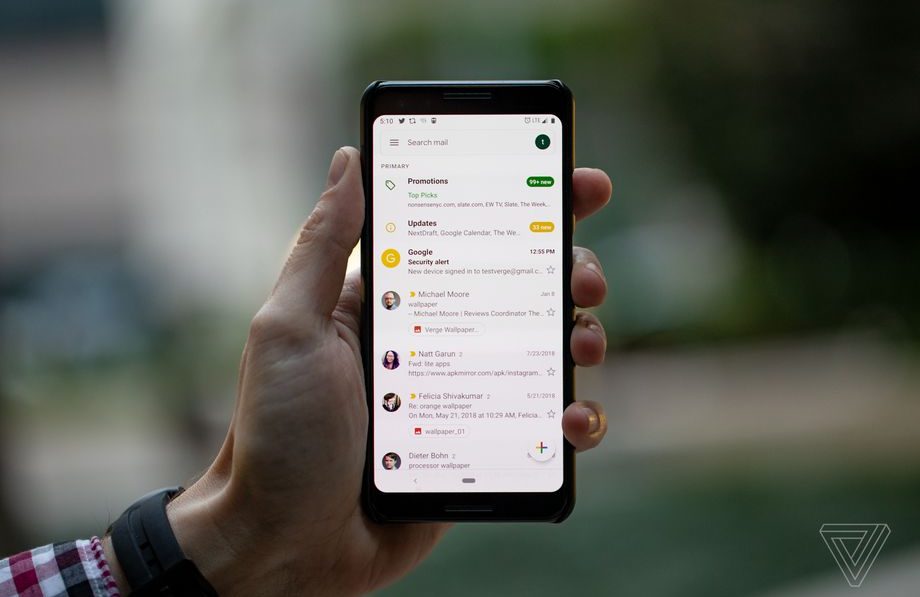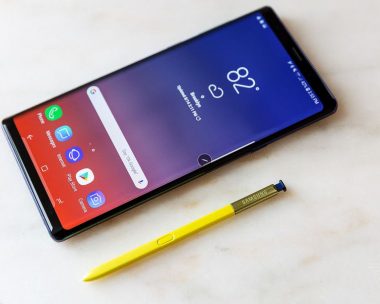Design Gmail mobile app redesign begins rolling out today

By
Beginning today, Google is rolling out a redesign of the Gmail app for Android and iOS. It’s based on the “Material Theme” that has been available on the web since April of last year. When the update hits your phone, you’ll find an app that no longer has a heavy red bar at the top and is generally a little lighter and cleaner-looking.
In the redesign, Google is once again using its custom Google Sans font. (You’ll especially notice it in the sidebar.) You’ll also find that the account switcher has been moved to the upper right-hand side and is integrated with the search bar. That search bar is the main navigation for Gmail now, containing both the hamburger menu button and the account switcher. The “Floating Action Button” remains down in the lower-right corner.
The redesign has just a few new features, including options for different spacing of the emails in your inbox: default, comfortable, and compact. The default view spaces things out quite a bit, with extra white space and little buttons that let you directly tap into attachments on emails. The comfortable view looks the most like the current iteration of the Gmail app, while compact tightens things up a bit and turns sender avatars into checkboxes.
But if you are a fan of the soon-to-be-shutdown Inbox app, there’s not much here to ease the pain of your impending loss. Although the new Gmail app does surface attachments, it uses traditional Gmail grouping instead of Inbox’s, and it also doesn’t integrate Google Tasks.
I’ve been using it for the past day and, well, it’s still Gmail. Fortunately, the update maintains all of the Gmail preferences you have now, including your preferred style of sorting your inbox. The icons, buttons, and use of white space all feel a lot more modern, but underneath, the app works and acts just like Gmail always has.
Google says that the redesign is a “gradual rollout” that will start today on Android and “continue on to iOS throughout the coming weeks.”
Credits to: theverge;


